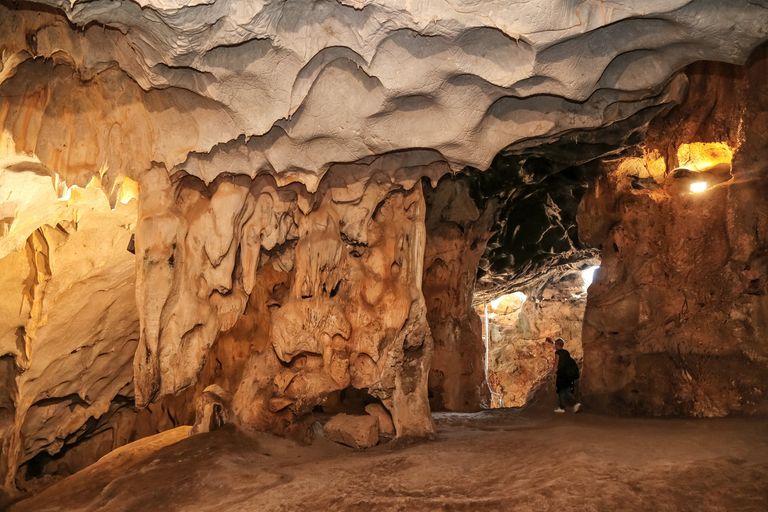Caves are mostly found around relief areas (low lands) and for that reason, they form flow paths for many water bodies. There are so many rivers on earth that flow underground unknown to even people living around them.
Oftentimes people confuse caves with random rocks. For a body to be classified as a cave, it must have at least one entrance and one exit on opposite sides. There are caves whose entrance is just slightly bigger than a barrel but the internal area spans more than the length of a football pitch. The size of the entrance of a cave does not determine the size of the entire cave.
ROCK FORMATION
As I said earlier, rocks may be formed from the carbonation of shells of sea creatures over thousands or millions of years as the case may be. Just to clear confusion, sea creatures make use of the calcium present in seawater to make strong shells for themselves and when they die and decompose, the shells fall to the floor of the sea. Over millions of years with sea creatures constantly losing their shells, it becomes clear to us that massive lumps of rocks can be formed. There are underwater caves as a result of this but some rocks also find their way to the surface of the sea and subsequently on land.
HOW DO THE ROCKS MOVE?
This is advanced geology but I can say for a fact that it is a result of the movement of the tectonic plates of the earth.
FORMATION OF CAVES

image source
After the movement and formation of rocks, caves do not just form out of the blues. I will talk about caves forming from top to bottom and from bottom to top.
Caves form from top to bottom are a result of hydrogen in the atmosphere mixing with carbon. When hydrogen reacts with carbon in the atmosphere, it results in the formation of H2CO3 known as carbonic acid. When it rains down, it results in a phenomenon known as acid rain. When carbonic acid falls to the ground, it gradually seeps into the soil; this happens over thousands of years and in the process, it reacts with the limestone inside the earth's crust to form hollow chambers or cavities. There is this popular saying, “Nature abhors vacuum” and on that note, water flows through the chambers formed from the reaction of acid and limestone. If water flows into a place, it must surely find a way out and that is what basically forms the entrance and exit of a cave.
Caves forming from bottom to top are mostly a result of Sulphur gas flowing up from where it is naturally deposited in the earth's crust to where it meets water. The combination of Hydrogen, Oxygen, and Sulphur results in the formation of tetra-oxo sulfate (vi) acid. This acid eats into the limestone deposit form below and as a result, underground caves are formed. Human beings do not have access to many underground caves, but as a result of advanced technologies, we can use wave and heat signatures to describe the structure of caves with a high degree of certainty.
CONCLUSION
I really love caves; I think they are great and everyone should have the opportunity to visit one.
Some of the caves to visit in Nigeria are Ogbunike cave(a limestone cave in Anambra state, Nigeria ), Ogbaukwu cave(a cave in Enugu state, Nigeria ), Ngwo cave, Ezeagu cave, and Arochukwu cave.


